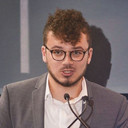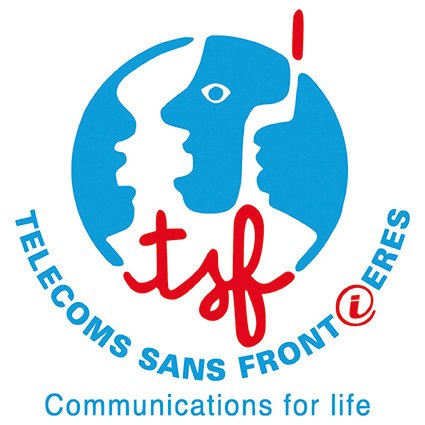Bridging the Digital Divide
From emergencies to community projects and education, dotmagazine spoke to Alexander James Thomas from the NGO Télécoms Sans Frontières, about its work in providing communications in some of the world’s most hostile environments.
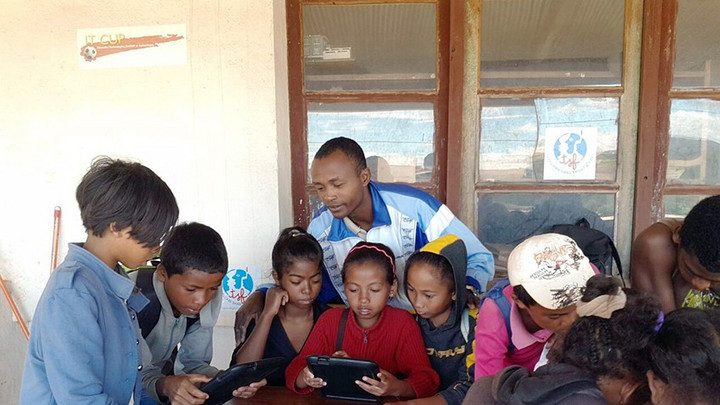
Source: © Télécoms Sans Frontières (TSF)
DOTMAGAZINE: TSF’s founders saw a need for those caught up in humanitarian emergencies to communicate with their loved ones and for a telecommunications infrastructure for those helping them. What kinds of measures are needed in the first hours and days of an emergency response?
ALEXANDER JAMES THOMAS: It is important to look back at Télécoms Sans Frontières' history, and see how the need for communication has remained constant since its foundation in 1998, even though the ways in which people use technology are in perpetual evolution.
Our story began during the 1st Gulf War in the Balkans and Kurdistan. The founders, Monique Lanne-Petit and Jean-François Cazenave, who at the time gave their spare time to general humanitarian aid, realised that, in addition to medical and food aid, there was a critical need for reliable emergency telecommunications services. Conflicts and disasters often lead to massive displacements of civilian families, meaning that people are separated from their loved ones. At the time, no communications structures were in place to help them find assistance or their family. To address the need for communications services, the founders bought their first satellite telephone in 1998 and from that very moment, the organization was born.
TSF soon found that beyond affected populations, the international response community also had a critical need for reliable telecommunications services in the first days after an emergency. Therefore, TSF expanded its operations, improved its technology, and began to establish rapidly deployable emergency telecommunications centres to serve the various agencies of the United Nations, local and national governments, and NGO relief workers.
Today, a disaster strikes, what would be your initial reaction? 99.9% of the time, people’s knee-jerk reflex will be to take out their phone and let their families know that they have survived. But when the network is down, destroyed, or saturated, populations find themselves cut off from the rest of the world. TSF’s mandate focuses on the arrival in the field in less than 24 hours thanks to its global presence to ensure that survivors have not only a means to contact their loved ones, but also to access information online, connect to social networks, and request assistance.
Simultaneously, our teams will set up communications hubs at the heart of disaster zones with satellite internet and telephone connectivity to ensure that the hundreds of aid agencies working night and day have a means to share time-critical and life-saving information.
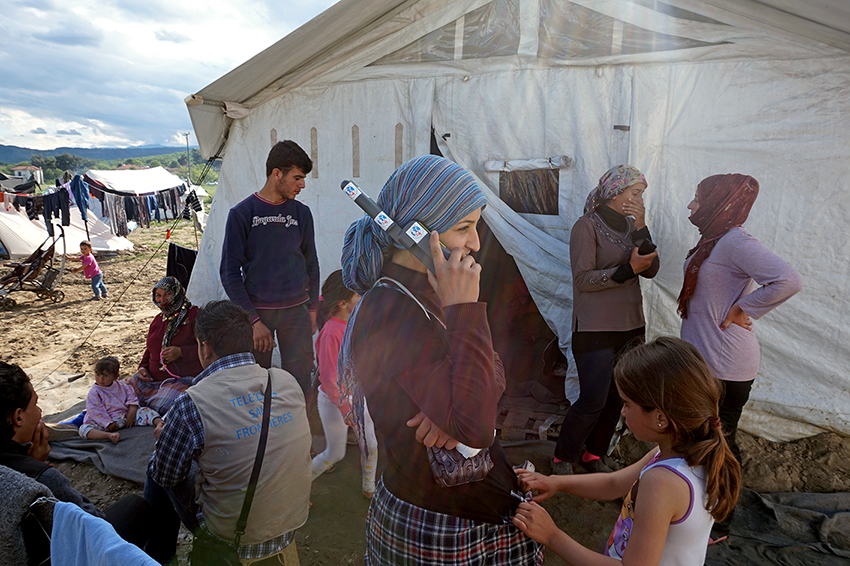
Source: © Télécoms Sans Frontières (TSF)
DOT: Can you give us an example of how TSF’s emergency response works on the ground?
THOMAS: No two disasters are quite the same, and part of our job is to adapt our response to the needs on the ground. In recent times, we have found that people rely more and more upon social networks and cross-platform communications apps to communicate with one another, and thus prefer to use their own devices. The European Migrant Crisis in 2015/2016 demonstrated the importance that Wi-Fi can play in a crisis situation. A simple commodity for many, an Internet connection can prove to be a veritable lifeline when all of one’s memories and associations to a previous peaceful life are held on a mobile phone. It is for this reason that, beyond its traditional telephone calls, TSF set up high-density Wi-Fi throughout the migration route, starting on the Greek Islands of Lesbos (in Moria and Skala), Samos and in mainland Greece with two connections in Idomeni.
This operation proved vital not only for migrants’ communications requirements, but also for their individual empowerment. It is a rare example of humanitarian aid whereby affected individuals are able to use their own devices and belongings to respond to their own needs, with a simple Wi-Fi connection serving as a powerful catalyst for psychological relief.
Over 325,302 unique devices were connected to TSF internet, allowing an estimated 600,000 migrants to make the most of social networks and cross-platform communication apps, assisting them in keeping in touch with their loved ones.
DOT: TSF works to “bridge the digital divide”. What is this? How is it done and why is it important?
THOMAS: TSF set itself the objective to bridge the digital divide back in 2005. The idea is to bridge the ICT gap in isolated communities to develop technology as a motor for economic and social growth.
When we set up our first community center in Dakoro (Niger) in 2005, it was a question of providing access to ICT and notably internet. We then went on to open further centers in Nicaragua, Burkina Faso, and Madagascar and as the use of Internet and new technologies continued to evolve, so did the role of our community centers.
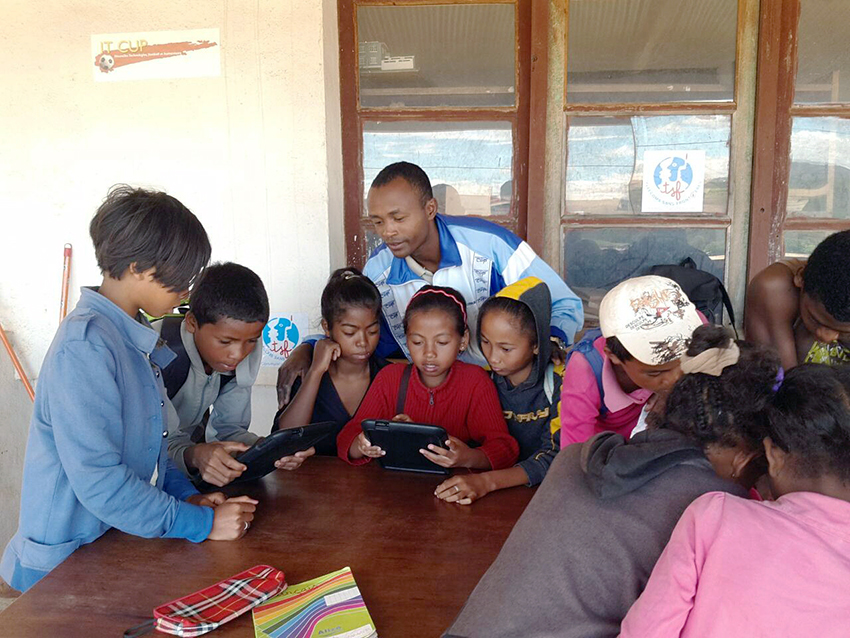
Source: © Télécoms Sans Frontières (TSF)
Let’s take a look at a specific example in Madagascar. Listed amongst the world's poorest countries, Madagascar is a place where social inequality and political instability dictate the lives of its inhabitants. TSF chose to set up its operations in Miarinarivo in 2012 to develop ICT as a vector for the town’s development. Via its Community Centre (co-funded by the IT Cup initiative), TSF provides Internet access and ICT equipment to members of the town's community. The centre aims to reduce the digital divide thanks to the integration of new technologies, whilst supporting communities and the various development programmes that are led by local organizations. Miarinarivo's teachers also benefit from the centre as a place to enrich their stock of educational resources.
Students represent a large proportion of the centre's users. In collaboration with the town's colleges, our project manager has initiated training sessions aimed at improving students' use of ICT for enhancing their studies.
In parallel with its activities in the Miarinarivo community centre, TSF has also been involved in providing extra-curricular activities since 2015. We look to work alongside organizations that are sensitive to cultural and human development and where ICT can play a key role in this. Our German-based partner NGO Ny Hary helps underprivileged children access education and encourages them to act together to improve their futures. The extracurricular activities offer a dynamic way of learning by using digital tablets that are provided for learning sessions to consolidate the day's work thanks to selected applications and various educational tools.
TSF's goal is to diversify the manner in which children learn by offering new supports during sessions on various themes such as reading, traditional Madagascan tales, games, and school progress monitoring, whilst the digital resources library allows children to deepen their knowledge in key subject areas, helping them to carry out research and develop cultural understanding.
Through such projects, TSF's objective is to build human development and accelerate the social, cultural and digital capacities of isolated communities.
DOT: Is connectivity something that has become a human right or is it a bonus, rather than a necessity?
THOMAS: Connectivity is something that has become so vital to all of our lives that it is difficult not to consider it as one of our basic human rights.
In disaster situations, populations require connectivity and other means of communication just as much as more ‘traditional’ interpretations of humanitarian aid such as food aid or medicine. The difference with connectivity is that it is one of the only means of aid that allows populations to cater for their own needs – families use their own telephones to speak to the people they want to speak to, using applications they want to use. No limitations are imposed, and they are free to use the internet as a means of communication in the way in which they desire.
We do, however, insist that connectivity be used exclusively for communications purposes and thus filter access to content we deem undesirable. This is also a way in which we optimize the use of the connection, reserving bandwidth for priority usage.
DOT: What can and should the Internet industry be doing to bridge the digital divide?
THOMAS: Whilst access to Internet and technology is expanding at a fast rate thanks to industry efforts, the digital divide remains an issue for many. TSF believes society should encourage ubiquitous rollout of reliable access to the internet to isolated communities. This aids social and economic development and helps create conditions of resilience and growth. The industry needs to roll out networks - mobile broadband for example - as deeply and quickly as possible and governments and regulators can play their role by removing barriers to access and building resilience into the economic and social fabric of their country and within regions currently underserved today.
This will take a collaborative approach between the public and private sector and smart public policy to continue connecting more rural and unserved areas to the benefits of high-speed Internet. The economics of building and expanding high-speed Internet to often sparsely populated rural and unserved areas are challenging. The most effective way to keep pace with consumer needs in rural areas and to connect the unconnected will be for the public sector and private sector to continue working together.
Alexander James Thomas joined Télécoms Sans Frontières’ international headquarters in 2013, undertaking the role of Head of International Relations. He is in charge of TSF’s corporate relationships whilst representing TSF amongst various international institutions such as the United Nations and the European Commission’s Humanitarian Aid sector. Alexander has deployed to some of the world’s largest humanitarian crises in countries including Syria, Nepal, Turkey, Vanuatu, and the Philippines to bring communications to affected populations and collaborate with United Nations agencies and governments on the humanitarian response.
Please note: The opinions expressed in Industry Insights published by dotmagazine are the author’s own and do not reflect the view of the publisher, eco – Association of the Internet Industry.

